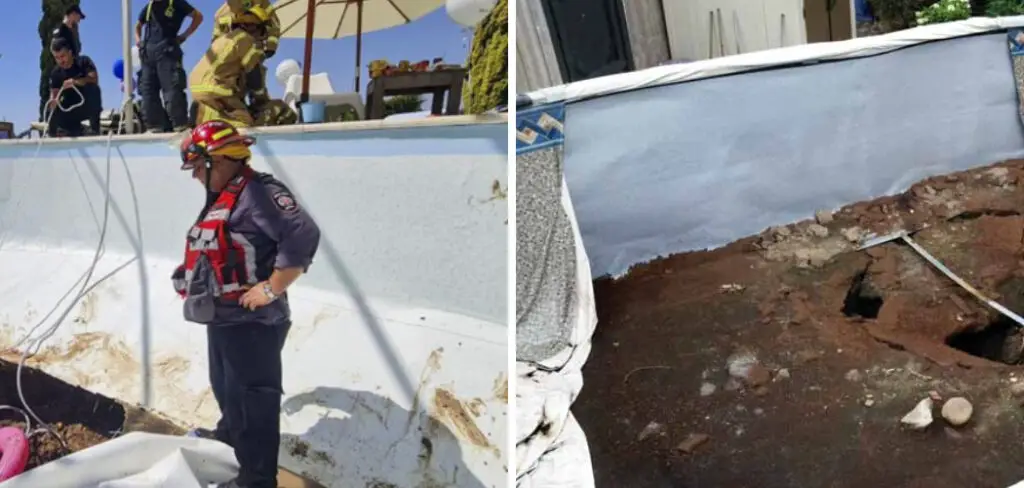
Are you struggling with a sinking pool? Have you found the telltale signs of a sinkhole beneath the surface of your pool?
Don’t panic – there is hope yet!
In this blog post, we’ll show you how to fix sinkhole under pool. From recognizing potential problems to planning for repair, professional landscapers consider all kinds of factors when it comes to fixing these issues. Read on for more information about what causes sinkholes and why they should be handled properly in order to prevent further damage.
What Causes Pool Sinkhole?
Sinkholes can occur naturally when the surface of the earth is not stable enough to support itself.
The soil and rock beneath a pool can easily become compromised, resulting in a deep hole under the pool’s surface.
This type of sinkhole is usually caused by water eroding away at the soil or by erosion due to extreme weather events such as heavy rain or flooding. Additionally, sinkholes can form if the ground underneath a pool is cut away due to construction, mining, or drilling.
Why Is Repairing Pool Sinkhole Important?
Repairing a sinkhole beneath the surface of your pool is important for several reasons. First and foremost, it’s essential to remove any potential danger posed by a deep hole in an otherwise flat area. Additionally, if not repaired quickly, sinkholes can cause structural damage to foundations or even lead to a complete collapse of a pool deck.
Finally, filling the hole quickly can help protect your pool from further damage and erosion due to water or weather.
Can You Do It Yourself?
In most cases, fixing a sinkhole beneath the surface of your pool should be handled by a professional landscaper. However, depending on the size and severity of the sinkhole, it may be possible to tackle the project yourself. Before attempting any repair work, make sure you have all necessary safety equipment, such as gloves and goggles.
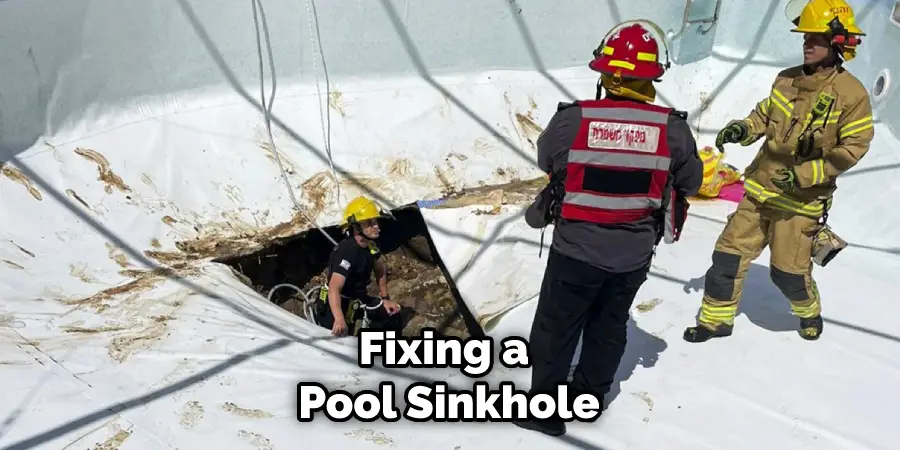
Additionally, make sure you research the best methods for fixing a pool sinkhole and use materials specifically designed to last in this type of environment.
Required Tools and Materials
The tools and materials you’ll need for repairing a sinkhole beneath your pool will vary depending on the size of the hole and the type of repair needed. Generally, though, you should plan to use
- Shovels,
- Pails
- A trowel
- Sandbags or other types of fill material
- Concrete mix
- Reinforcing bars (for larger repairs)
- Plastic sheeting (to help prevent water from entering the sinkhole).
10 Steps on How to Fix Sinkhole Under Pool?
Step 1: Prepare the Area
Cover the hole with plastic sheeting and make sure the area around it is clear of debris. This will help keep water from entering the sinkhole, which can cause further damage. Covering the area with a tarp or plastic sheeting can also help keep dust and dirt from entering the hole.
Step 2: Dig Deeper
Dig down around the edges of the sinkhole, creating an even slope in the ground around it. This will help ensure that water is diverted away from the pool and not into the hole. As you dig, use your shovel to make the sides of the hole as vertical and even as possible.
Step 3: Fill with Sandbags or Gravel
Once you have created an even slope around the sinkhole, begin filling it with sandbags or gravel. Layer them in and tamp down firmly, making sure that each layer is packed tight. This will help create a solid base for the repair work.
Step 4: Pour Concrete
Once the sandbags or gravel have been firmly packed, begin pouring concrete into the hole. You may need to use reinforcing bars (for larger repairs) to ensure that the concrete is strong and stable. Allow the concrete to cure before moving on to the next step.
Step 5: Backfill Around Hole
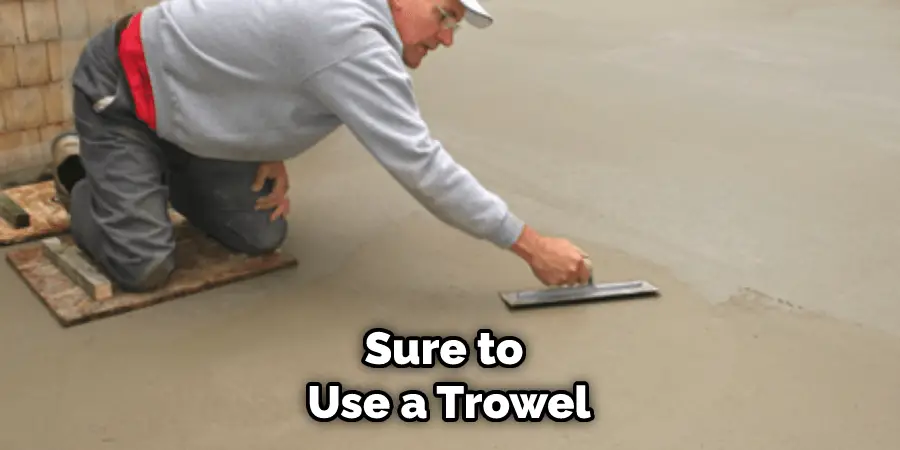
Once the concrete has cured, begin backfilling around the edges of the sinkhole with soil or other fill material. Make sure that you’re packing it down firmly as you go. Be sure to use a trowel or similar tool to level out the surface around the sinkhole.
Step 6: Compact the Soil
After you have backfilled around the sinkhole, use a tamper or roller to compact the soil tightly. This will help ensure that it is firmly in place and won’t shift or settle over time.
Step 7: Smooth Out the Area
Once you have compacted the soil, use a rake to smooth out any uneven areas. Smoothing out the area will help make the repair look more professional and aesthetically pleasing.
Step 8: Check for Leaks
Before finishing, you should check to make sure that there are no leaks in your repair work. Use a garden hose to fill the sinkhole with water and watch for any areas where the water is leaking out. If necessary, make any adjustments to your repair work to ensure that the area is watertight.
Step 9: Fill with Water
When you’re sure that there are no leaks in your repair work, fill the sinkhole with water and check for any signs of seepage. If everything looks good, you can begin refilling your pool.
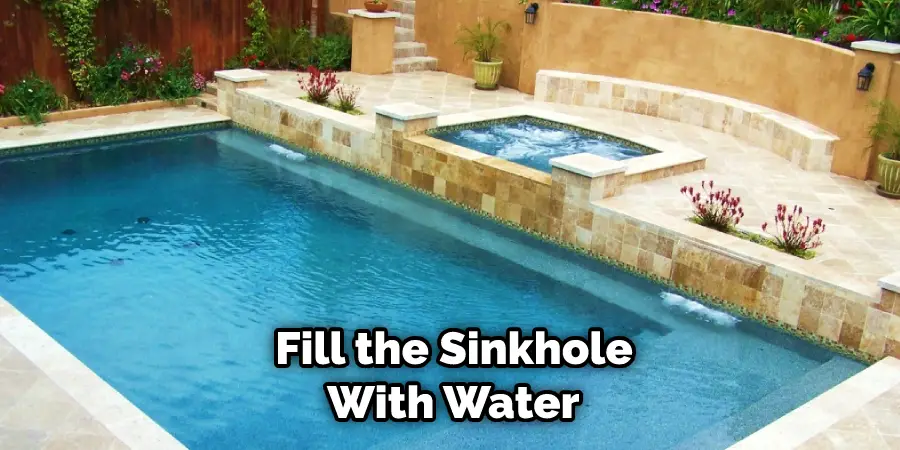
Step 10: Monitor
Even after you have completed the repair work, it’s important to continue monitoring the area for signs of problems. Be sure to check for seepage regularly and make any necessary repairs or adjustments as needed.
This will help ensure that your pool remains safe and sound for years to come.
By following these steps, you can repair a sinkhole beneath your pool quickly and easily. With the right tools and materials and some careful planning, you can have your pool looking good as new in no time.
You should also keep in mind that it’s always important to use proper safety precautions when undertaking any type of repair work on or around your pool.
10 Safety Precautions to Take
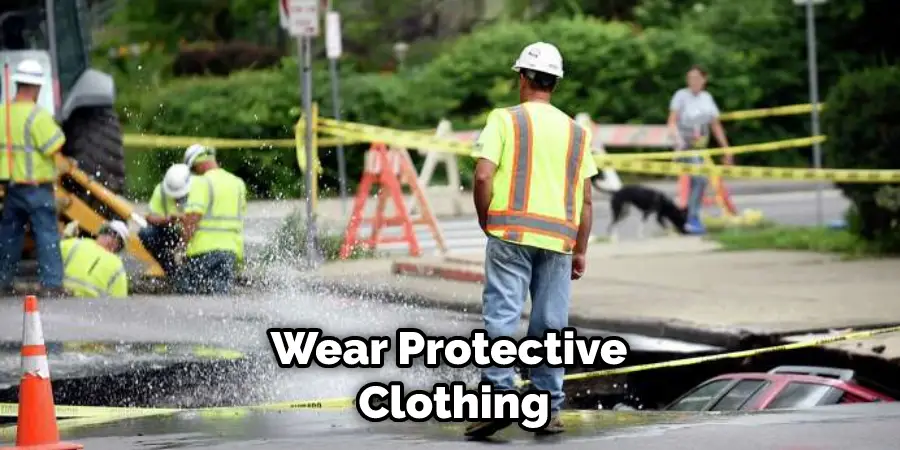
- Unplug any and all electrical systems, such as lights and pumps, to avoid potential electrocution. Plugged-in electrical systems can also be a fire hazard if the wiring is damaged.
- Disconnect, empty, and move any pool toys or other items near the affected area to provide easier access for repairs. Cleaning products, such as chlorine or acid, should also be removed if present.
- Keep any children and pets away from the sinkhole area while repairs are being made to prevent them from getting injured.
- Wear protective clothing and eye gear when dealing with a sinkhole to protect against any potential debris or hazardous materials that may occur during the repair process.
- 5. Utilize a breathing filter mask if the sinkhole is located in a small, enclosed area to avoid inhaling any dangerous chemicals or vapors while working on it.
- Call your local fire department before attempting to repair the sinkhole yourself if there is any potential risk of a gas leak or other hazardous material.
- Turn off the main water supply to the pool before making any repairs to avoid flooding the area with water. It will also help to prevent any water from entering the sinkhole and making it larger.
- Place a tarp or other waterproof covering over the sinkhole area if there is a potential for rain or inclement weather during repairs.
- Utilize pieces of wood, rubber mats, or plastic sheets to hold up the area around the sinkhole when making repairs to prevent any further damage.
- Hire a professional to complete the repair if you are not comfortable or experienced enough to do it yourself. It is important to ensure the job is done correctly and safely with minimal risk to anyone involved.
Following these safety precautions will help ensure your pool is repaired correctly and quickly, so you can get back to enjoying it as soon as possible.
Cost of Fixing Sinkhole Under Pool
The cost of fixing a sinkhole under a pool can vary depending on the size, severity and location of the sinkhole. Generally speaking, repairs to small sinkholes can range between $100-$2,000, while larger ones may require up to $10,000 or more in materials and labor.
It is also important to factor in any potential costs for hiring a professional or renting equipment if needed. In addition, costs may increase if any unexpected problems arise during the repair process.
It is also important to consider the cost of not fixing the sinkhole in regard to potential property damage or safety risks that could occur. A sinkhole can cause structural damage and even lead to injury if left unaddressed, so taking care of it quickly is essential.

Conclusion
Sinkholes are a serious issue that can cause extensive damage to your property. If you have a sinkhole on your property, it is important to take action immediately to fix the problem.
There are several methods that can be used to fix a sinkhole, and the best method will depend on the size and severity of the sinkhole. Follow this guide on how to fix sinkhole under pool.
If you have any concerns about fixing a sinkhole or if you need help choosing the right method for your situation, contact a professional contractor who specializes in sinkhole repair. With proper care and maintenance, your pool should be safe from further sinkhole activity.
You Can Check It Out to Lay Pavers Around a Pool

